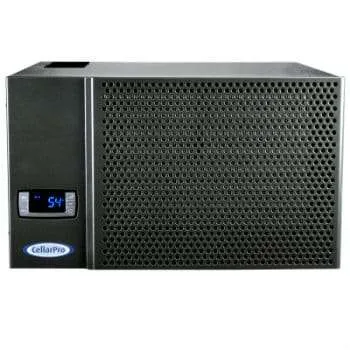A well-maintained wine cellar is essential for preserving the quality and flavor of your wine collection. The key to achieving this is maintaining a consistent temperature and humidity level. Cooling a wine cellar may seem straightforward, but it requires careful planning and the right equipment. In this guide, we’ll explore various methods to effectively cool your wine cellar.
1. Understanding the Ideal Wine Cellar Conditions
Before diving into the methods of cooling a wine cellar, it’s important to understand the optimal conditions. The ideal temperature for storing wine is between 50°F and 59°F (10°C to 15°C). Humidity should be maintained at 60-70% to prevent corks from drying out, which could lead to oxidation and spoilage.
2. Choosing the Right Location for Your Wine Cellar
Location is a crucial factor in cooling a wine cellar. Ideally, the cellar should be in the coolest part of your home, such as a basement. This reduces the workload on your cooling system. Additionally, avoid placing the cellar near heat sources or in direct sunlight, as this can cause temperature fluctuations.
3. Insulating Your Wine Cellar
Proper insulation is vital for maintaining a stable temperature. Use high-quality insulation materials on walls, ceilings, and floors. Vapor barriers are also essential to prevent moisture from entering and affecting the temperature and humidity levels. Consider double-paned, insulated doors to minimize heat exchange.
4. Installing a Wine Cellar Cooling System
The most effective way to cool a wine cellar is by installing a dedicated cooling system. There are several types of systems available:
- Through-the-Wall Units: These are ideal for smaller cellars and are relatively easy to install. They exhaust heat into an adjacent room.
- Ducted Systems: These systems are more complex and suitable for larger cellars. They use ducts to circulate air and can be installed in a different room or outside the home.
- Split Systems: These are a combination of both, where the evaporator is placed in the cellar, and the condenser is located elsewhere.
- Self Contained Systems: Self-contained cooling units deliver precise and consistent temperature control, ensuring your wine cellar maintains the perfect storage conditions. While these units do not control humidity, they effectively maintain relative humidity inside your cellar. We offer renowned cooling units brands famous for their quiet operation.
- Ceiling Cooling System: Ceiling Mount Cooling Systems are celebrated for their space-saving design, making them ideal for wine cellars with limited floor space. They ensure even and consistent cooling throughout the cellar, preventing temperature variations and hot spots. Known for their quiet performance.
5. Monitoring and Maintaining Temperature and Humidity
Once your cooling system is installed, it’s crucial to monitor and maintain the temperature and humidity levels regularly. Use a digital thermometer and hygrometer to track the conditions inside the cellar. Some advanced cooling systems come with built-in monitoring features that alert you if levels deviate from the desired range.
6. Troubleshooting Common Cooling Issues
Even with the best setup, you might encounter issues. Here are some common problems and solutions:
- Temperature Fluctuations: Check for gaps in insulation or door seals. Ensure the cooling system is adequately sized for your cellar.
- High Humidity: Verify that the vapor barrier is intact. Consider a dehumidifier if necessary.
- Low Humidity: You might need to introduce a humidifier or adjust the cooling system settings.
7. Conclusion
Cooling a wine cellar is more than just installing an air conditioner. It requires a careful balance of temperature, humidity, insulation, and ventilation. By understanding the ideal conditions and selecting the right cooling system, you can create a perfect environment for aging and storing your wine collection, ensuring each bottle is preserved at its best.
Maintaining this delicate environment will not only protect your investment but also enhance the enjoyment of your wine for years to come.






